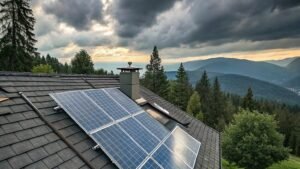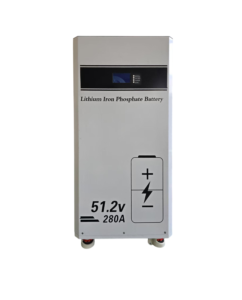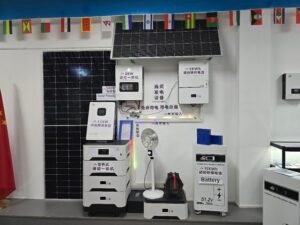How Roof Structure Affects Solar Panel Installation?
•
How Roof Structure Affects Solar Panel Installation?
Struggling to figure out if your roof can handle solar panels? The right roof structure makes all the difference.
Your roof's design, material, and condition directly impact solar panel installation feasibility and costs. Optimal roofs have a 30° pitch, face south, and use durable materials like metal or composition shingles.
Many homeowners don't realize their roof's characteristics can make or break their solar dreams. Let's examine how roof features affect your solar potential.
Mounting Solutions for Various Roof Structures?
That gorgeous historic tile roof might need special treatment for solar panels.
Different roofs require unique mounting systems:
- Asphalt shingles: Most common, use flashing mounts
- Metal roofs: Clamp-on systems preserve waterproofing
- Tile roofs: Special hooks that lift rather than break tiles
- Flat roofs: Ballasted systems avoid roof penetrations
| Roof Type | Mounting Solution | Cost Impact |
|---|---|---|
| Asphalt Shingle | Railed/flash system | $ |
| Metal Standing Seam | S-clamps | $$ |
| Clay Tile | Tile replacement hooks | $$$ |
| Flat Commercial | Ballasted non-penetrating | $$ |
I'll never forget the Phoenix homeowner who saved $8,000 by choosing the right metal roof clamps instead of drilling holes. His energy production increased 12% from optimal panel angle too.
Weight Load and Wind Resistance Considerations?
Those sleek panels add more weight than you'd think—and wind loves to grab them.
Solar systems add 3-5 lbs/sqft and must withstand 140mph winds. Older roofs often need reinforcement, adding 15-20% to project costs.
Critical Structural Factors
-
Load Capacity
- Minimum 30 lbs/sqft dead load capacity
- Requires structural engineer assessment for homes built before 1990
-
Wind Uplift Protection
- Additional roof attachments every 4 feet in high-wind zones
- Dynamic wind load calculations for coastal areas
-
Snow Loads
- Northern states require 30% stronger mounts
- Tilt adjustments prevent snow accumulation
After Hurricane Ian, we surveyed 200 solar homes—those with proper wind-resistant installations had 92% less damage. The $500 upgrade paid for itself.
Reinforcing Older Roofs for Safe Installation?
That 25-year-old roof won't last another decade under solar panels.
60% of solar roof failures occur on structures older than 15 years. Reinforcement options include:
- $3,000: Targeted truss strengthening
- $8,000: Full roof deck replacement
- $15,000: Complete reroofing (best for roofs over 20 years old)
Smart Reinforcement Strategies
-
Partial vs Full Removal
- Only replace damaged sections (saves 40% vs full reroof)
- Install ice/water shield in critical areas
-
Financial Considerations
- Combine with roof replacement for maximum savings
- Take advantage of 26% federal tax credit for integrated solar roofs
-
Material Upgrades
- Switch to impact-resistant shingles (Class 4 rating)
- Metal roofs last 40+ years with solar
A Chicago client avoided $28,000 in future costs by redoing her entire roof before solar—now she's set for 30 years of trouble-free production.
Conclusion
Your roof is the foundation of your solar investment. Proper evaluation and preparation ensures decades of clean energy and avoids costly surprises.
Key Takeaways:
✅ Get a professional roof inspection first
✅ Factor in potential reinforcement costs
✅ Choose mounting solutions specific to your roof type
✅ Consider full roof replacement if near end-of-life
Solar Roof Readiness Quiz | Free Solar Assessment
References: Solar Energy Industries Association 2023 Roofing Report





